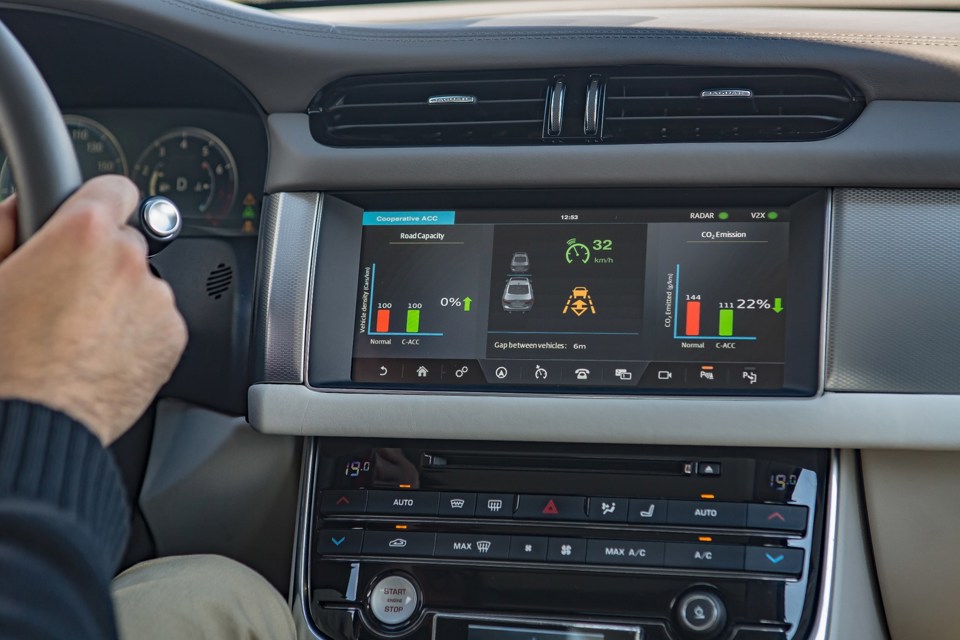Self-driving vehicles could be on UK roads by 2026, following the enactment of the Government’s Automated Vehicles (AV) Act on May 20 which gave the green light for advanced navigation technology to be used on British roads.
Its champions assert that this legislation places the UK at the forefront of self-driving technology regulation, unlocking an industry potentially worth up to £42 billion and creating 38,000 skilled jobs by 2035.
The law will mandate that self-driving vehicles achieve safety levels at least equivalent to those of a careful and competent driver and will also have to pass stringent checks before being allowed on roads.
Crucially, for the first time, insurance providers, software developers, and car manufacturers will be allowed to assume responsibility for the vehicle’s performance, rather than the driver.
The government said road safety is a central focus of the new legislation, as automated vehicles could mitigate human error, which today accounts for 88% of road collisions. Fatalities and injuries from drink driving, speeding, fatigue, and inattention could also be significantly reduced.
Under the new law, an independent incident investigation function will support the vehicle approval system and will be charged with supporting the industry to continuously improvement similar to the framework under which the aviation industry operates.
Speaking at the Motor Ombudsman and Radius Law Automotive Business & Law Conference held in London on May 15, Lucy McCormick, a barrister at Henderson Chambers who is well known for her expertise in the legal implications of autonomous vehicles, said the AV Act introduces several crucial legal concepts for the regulation and implementation of self-driving cars such as the 'user in charge' and the 'authorised self-driving entity'.
Each outlines the roles and responsibilities of the human behind the wheel and the entities deploying the autonomy.
“The most eye catching aspect is the fact that they're making it so that the user in charge, if the vehicle is driving itself, has immunity from criminal prosecution for anything arising from what the vehicle is doing,” she said.
While one of the most significant provisions in the new legislation grants immunity to the user in charge from criminal prosecution for incidents while the vehicle is in self-driving mode, the bill also addresses the authorisation of use, enforcement, investigation, and misleading marketing.
Standardising terminology and symbols across manufacturers will be important and the new AV bill's provisions against misleading marketing will be crucial to prevent misunderstandings about the capabilities of automated vehicles.
Marketing guidelines which mislead consumers about a vehicle's autonomous capabilities will also become a criminal offence to ensure that end users have a clear and accurate understanding of what these vehicles can and cannot do.
“That's been a huge problem in this area as people just don't understand the differences and questions like, “OK, so I'll be able to like drive home and get drunk?’ just betrays an absolute and fundamental misunderstanding of what the tech does so I think people will trust it more when the marketing is clear,” said McCormick.
Public acceptance and understanding of AV technologies remain significant challenges, agreed Dr Andrew Tongue, a research director at ICDP: “The challenge will be developing simple explanations for customers, because we all have some fairly binary questions such as ‘can I read my book?’ I want a yes/no answer to that. 'Can it drive me home from the pub when I have a skinful?' Probably not. That's a taxi.”
Alistair McCrindle, director at Autotech Training, spoke of the need for more detailed guidelines to help the industry prepare for the future as the current framework lacked sufficient detail.
“From my perspective, working both with manufacturers and independently within the industry,” he said. “there isn't enough detail in the bill to help us prepare adequately for future developments, especially considering the uncertain timescale. More specific guidelines would help the industry grow and develop more effectively.”
ICDP’s Tongue agreed that the real challenge would lie in the detail. “It's great that we have this legislation,” he said. “It shows the UK's proactive stance on automated vehicles. However, it's a high-level framework, and the real challenge will be in the detailed implementation. Learning how to manage automated vehicles in the complex and varied environments of the UK is timely but requires significant detail and nuance.”
Defending the government, McCormick said its high-level approach would usefully allow for flexibility, noting that since 2015, the government has favoured adaptable guidelines over rigid legislation through establishing the Code of Practice for testing on public roads.
She said this approach allows the UK to make quick changes as the technology continues to evolve before committing to primary legislation, ensuring responsiveness to fast-moving industrial developments.
Commenting on the new legislation, Mike Hawes, chief executive of the Society of Motor Manufacturers and Traders (SMMT), hailed it as a watershed moment for UK automotive innovation and road safety.
“Self-driving vehicles will revolutionise our society, and this new law will help turn ambition into reality, positioning the UK alongside a few global markets with established regulatory frameworks.”
Richard Cuerden, director at the Transport Research Laboratory (TRL), added that by establishing a regulatory framework, the government is providing the industry with the confidence to support increased investment.
“Commercial success will only be possible if the public trusts the technology and chooses to use AVs. Safety is paramount, and we are dedicated to developing safe engineering and system requirements while fostering public confidence.”
















Login to comment
Comments
No comments have been made yet.